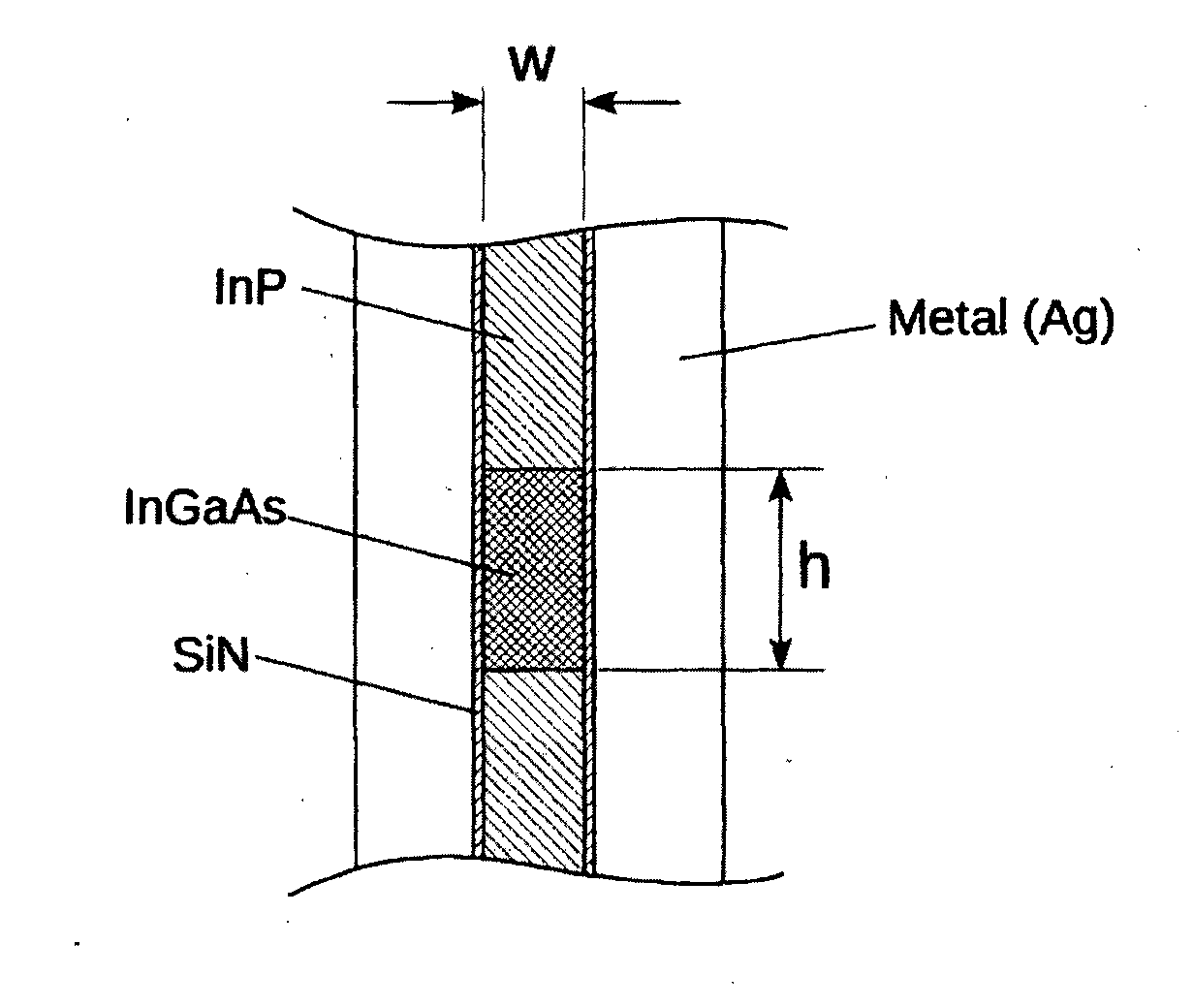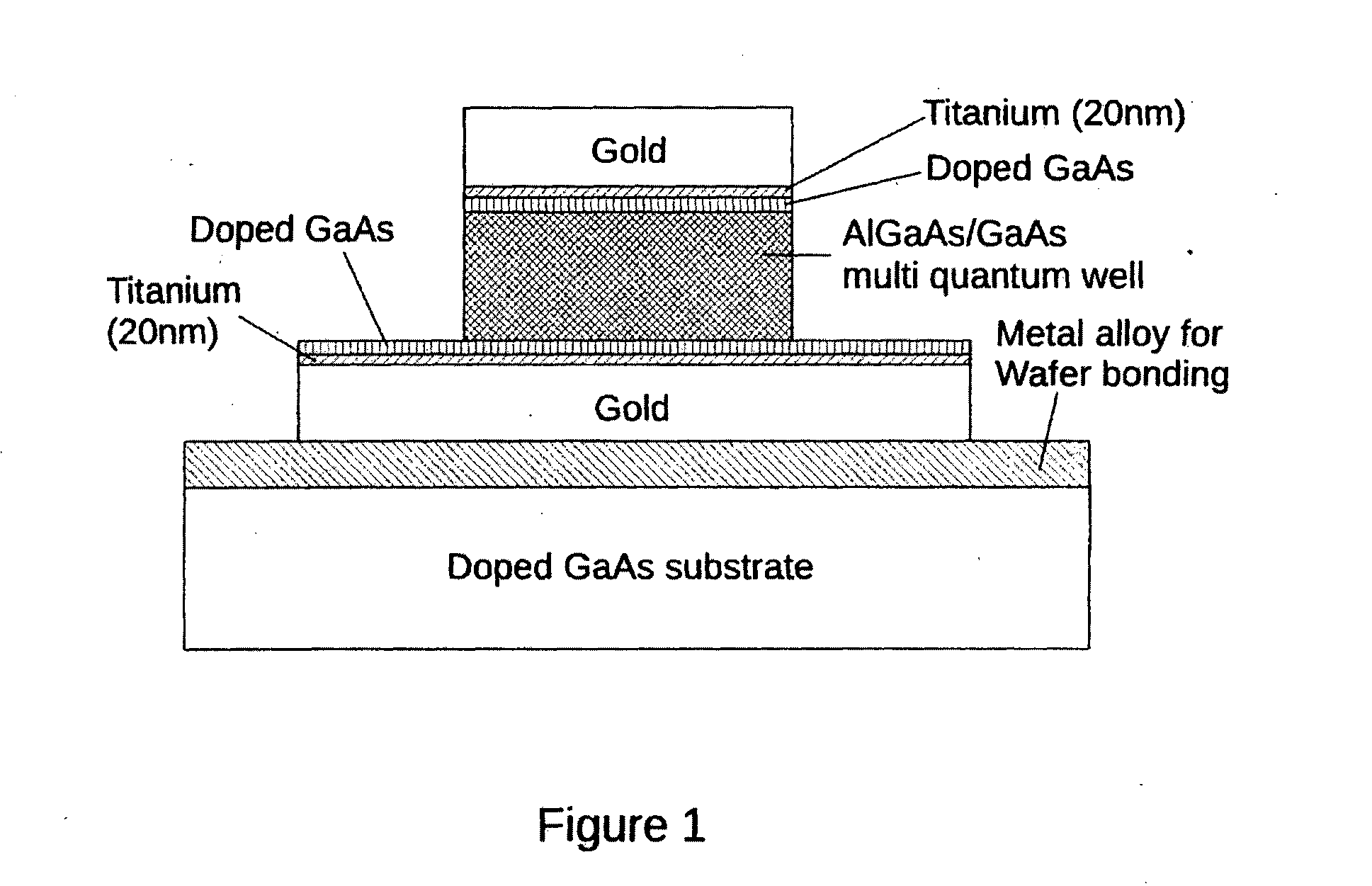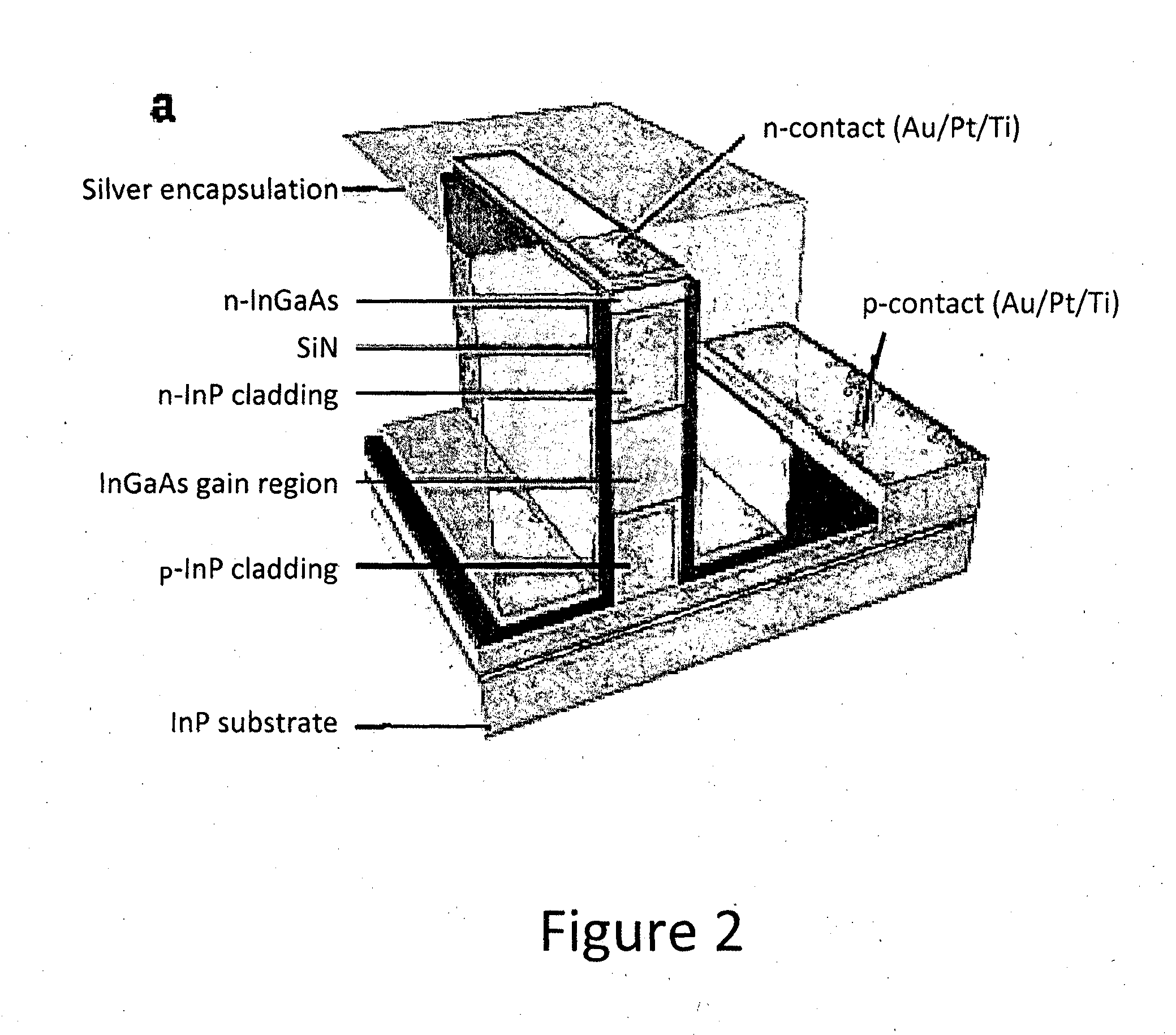Metal-insulator-metal waveguide for nano-lasers and optical amplifiers
a technology of metal-insulator metal and nano-lasers, applied in the direction of lasers, fiber transmission, transmission, etc., can solve the problems of high optical loss, difficult to make direct electrical contacts with the confining metal, and high optical loss of metal mirrors, so as to achieve great control over size, shape and position.
- Summary
- Abstract
- Description
- Claims
- Application Information
AI Technical Summary
Benefits of technology
Problems solved by technology
Method used
Image
Examples
first embodiment
[0064]an improved MIM waveguide structure 10 in accordance with the invention, as illustrated in FIG. 5, comprises a substrate 12 on which are supported first and second metal layers 14 and 16 which form electrical contacts for the waveguide. A narrow ridge of low-band gap semiconductor core 18, which forms the optical gain material, is sandwiched between the two metal layers 14 and 16. The semiconductor core 18 is surrounded on both sides by a low refractive index material 19 which is also sandwiched between the two metal layers 14 and 16. First and second layers of thin higher-band gap doped semiconductor material 15 and 17 are provided between the respective first and second metal layers 14 and 16 and the low-band gap semiconductor core 18. The improved MIM waveguide structure still provides an electrical path to the optical gain medium via the thin higher-band gap doped semiconductor layers 15 and 17. The optical mode that propagates down this waveguide is localised in the centr...
second embodiment
[0086]FIG. 10 shows a cross-section of a waveguide structure 60 with a series of such thin sections 62 of low band-gap semiconductor core material in the middle of the waveguide. In the epitaxial growth process the semiconductor core material could be grown out of a number of layers of semiconductors of various compositions. Here a number of layers 62 of InGaAs low band-gap semiconductor core material are shown separated by thin InP layers 64. The height of the low-band gap sections 62 in the core of the waveguide can be made small enough so that quantum confinement effects are seen, to improve the performance of the devices. For wide gain regions, (greater than say 30 nm wide) the gain material will look like multi-quantum well gain material, which can have significant performance improvements compared to bulk semiconductor.
[0087]When the width of the gain region is made small (less than approximately 30 nm) the quantum confinement effects may occur in two dimensions. In this case ...
PUM
| Property | Measurement | Unit |
|---|---|---|
| optical wavelengths | aaaaa | aaaaa |
| refractive index | aaaaa | aaaaa |
| refractive index | aaaaa | aaaaa |
Abstract
Description
Claims
Application Information
 Login to View More
Login to View More - R&D
- Intellectual Property
- Life Sciences
- Materials
- Tech Scout
- Unparalleled Data Quality
- Higher Quality Content
- 60% Fewer Hallucinations
Browse by: Latest US Patents, China's latest patents, Technical Efficacy Thesaurus, Application Domain, Technology Topic, Popular Technical Reports.
© 2025 PatSnap. All rights reserved.Legal|Privacy policy|Modern Slavery Act Transparency Statement|Sitemap|About US| Contact US: help@patsnap.com



